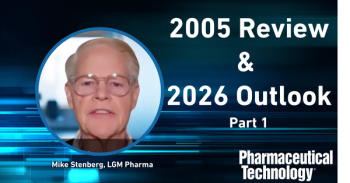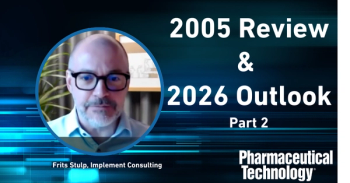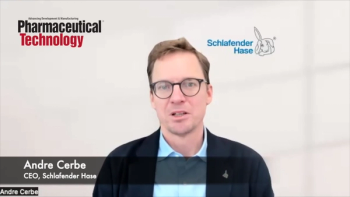Pharmaceutical Technology® Group has already summarized the uncertainty felt by many subject matter experts and key opinion leaders in the bio/pharmaceutical industry as the tariff policies of United States President Donald Trump's administration became a dominant topic of discussion at INTERPHEX 2025, held from April 1–3, 2025 in New York City.
These changes figure to shape what partnerships, and which types of partnerships, companies seek in R&D, manufacturing, commercialization, and other areas of the drug product lifecycle over the next several years.
What follows is a recap of some of those company representatives’ opinions, speculations, and in some cases, even preemptive plans to tackle a landscape that may not yet have definitively changed, but may be constantly shifting sooner rather than later.
Uncertainty is the magic word
Key Takeaways
- Widespread uncertainty over evolving US tariff policies is delaying capital projects and supply chain decisions across the pharmaceutical sector.
- Tariff impacts vary widely—US-based firms see supply-side disruptions, while foreign companies fear reduced access to US partnerships and markets.
- Policy-driven incentives may accelerate domestic pharmaceutical manufacturing and automation, but progress hinges on clearer long-term guidance.
William Wainwright, business development manager at Iwata Label USA, a division of Japan-based IL Group, encapsulated the uneasiness many in the industry are feeling—a sense of not quite knowing what might come next.
“It's obviously a very dynamic situation, and it's changing quite daily, sometimes by the hour,” Wainwright said (1). “Definitely, if the tariffs do stick long-term, the business will have to adjust to that. But I think a lot of players in the industry are waiting to see if and how long the tariffs are going to stick around. Because, as we've seen ... they're there, they're not there, the percent is changing. Obviously, all that goes into the calculus.”
Christopher Murphy, director of Global Business Development and Service Customer Support at Environmental Specialties, said he has already observed a slowdown of sorts in the progress of new projects.
“The biggest impact is the uncertainty, because we are in a capital investment world,” Murphy said (2). “Many companies, it would appear at the moment, are taking a wait-and-see attitude. Many projects are starting to become delayed, maybe pushed back, until it's understood what the environment is.”
America versus the world
A dichotomy emerged in these interviews, between the outlook of those companies based in the US and those that are not. Chris Gooding, general manager at CRL Solutions of Red Wing, Minn., said he did not anticipate his business would be significantly impacted in the near term, but did say that it does not operate entirely in a vacuum.
“The way that our products are made, as a government contractor, we source everything locally in the US, so for any of our US customers, obviously there's no impact,” Gooding said (3). “As we export and things change, there could be an impact there ... Like everybody else, I'm trying to see how this unfolds, but as of today, everything that we do is sourced through the US suppliers.”
On the other end of that spectrum was Thomas de Beer, co-founder and CEO of RheaVita, which is headquartered in Ghent, Belgium. But de Beer’s concern was less about pricing than progress.
“This is all pretty new for us, as a European company,” de Beer said (4). “It creates some uncertainty for pharmaceutical manufacturing innovation. Some substantial savings are done toward the regulatory authorities, [and the] pharmaceutical industry, they need the regulatory authorities to support their innovation. So hopefully, these savings toward the regulatory bodies are not, let's say, limiting or making innovations slower. And of course, we also strongly hope that these tariffs will not scare American companies to invest in European technologies, which are also very beneficial for American companies.”
Peter Sarvey, head of Sales for Automation NTH, and David Loula, global product director for ITT Engineered Valves, noted their respective companies’ positions as US-based businesses that rely, or may rely, on foreign equipment, and the relationships they must foster to procure what they need.
“The biggest impact right now is on our ability to price components and lead time for things,” Sarvey said (5). “We do final assembly, and everything is designed and built, here in the States for Automation NTH; we're based in [the] Nashville, Tenn. area. But a lot of the components that we get, whether it be raw materials, aluminum, steel, or even electronic components like sensors or cord sets or even cameras or robots, are coming from overseas. So we have to make sure that we've got language in our proposals to say that although this might be the price right now, and this is the lead time right now, in 30 days that might change. It's been hard to hold on to that price and lead time for a longer period of time. It hasn't affected our design or what we use yet. So right now, it's just a little bit of uncertainty of, how quickly can we come to a solution with one of our customers or clients, and can they make a decision on it? And a lot of times on large capex [capital expenditure] purchases, it's a longer decision period, so the price is just in flux.”
Given the present rise in smart technologies, artificial intelligence, and the like, Sarvey said he is observing an effort to keep manufacturing within the US—but with a twist.
“Long-term, we have seen a few companies that are our customers that are reaching out to look at automated manufacturing stateside, where they had been producing the parts overseas,” he said (5).
Loula was already looking specifically at some of the most prominent countries the Trump administration had prioritized setting its sights on, China, Canada, and Mexico, in trying to assess how US manufacturers would act going forward.
“There's a lot of puts and takes that are taking place ... If you are procuring components or some of your supply chain is based, for example, today in China, you've seen a recent increase in tariffs on components coming out of China that has a direct impact on our costs, and it's something that we have to decide as to whether we're going to pass those costs along to our customer base or we're going to eat those costs ourselves,” he said (6). “The tariffs that are being applied to Canada and to Mexico and some of the other countries where other metals are being imported has almost more of an indirect implication on cost, because you don't always know if the steel components that you're buying have metals that were sourced in one of the target countries. So that one's a little trickier to figure out, but we're working closely with our supply chain to identify which of those items might have direct impact on our cost position.”
Looking for silver linings
There is a potential for positives to eventually be drawn from higher tariffs imposed by the US, said Kerry Love, co-founder and CEO of the biotechnology company Sunflower Therapeutics.
“I think if we think about the impact that it potentially can have on, for example, the biologics industry here, it provides not only an opportunity, but a strong incentive to onshore manufacturing, and potentially to actually do it in a way that, combined with automation, can create kind of the facility of the future,” Love said (7). “That's more of a distributed manufacturing concept, or a micro facility like we're seeing revolutionize the electric vehicle space or new textiles or food production. I think it's time that we think about how this could be a driver for us to do something similar for protein and biologics production.”
Murphy agreed that the policies could indeed lead to a business boom, but worried that progress was being halted as companies formulate responses and action plans that fit their unique needs.
“If the practices are successful in onshoring more manufacturing, then it could eventually be a net gain for our business and additional facilities being constructed,” Murphy said (2). “But at the moment, it just seems that many projects are being held while people are trying to determine what their spending model will look like.”
Similarly, although de Beer had expressed some doubt about the pace of innovation continuing at a robust clip, he said the changing tides don’t mean companies should stop developing themselves and their offerings entirely, or seeking out new and useful partners.
“Today, I would say there is some uncertainty,” de Beer said (4). “But on the other hand, I think we as innovative companies should also try and think on how to deal with that. And I think we should stay positive.”
Sarvey, meanwhile, attempted to put the US government’s intentions for the pharmaceutical industry in perspective.
“The end goal, I'd have to imagine, is to bring that manufacturing back,” Sarvey said (5). “It is a journey. It's a many-year journey. But we are seeing a few signs of opportunities where a company that was manufacturing elsewhere is interested in what a concept for an automation line would look like stateside. So, that's kind of the two ends of the spectrum.”
As alterations in US policies continue, so will pharmaceutical partnerships. However, the full impact of these changes may not be seen by the end of the current Trump term, and could have the potential to outlast it by years or more.
References
1. Lavery, P. and Mirasol, F. INTERPHEX 2025: How Functional Labeling Can Protect Parentals in Vials and Syringes. PharmTech.com, April 1, 2025.
2. Lavery, P. and Mirasol, F. INTERPHEX 2025: Use of Walk-In Chambers for Bio/Pharma Development and Manufacturing. PharmTech.com, April 2, 2025.
3. Lavery, P. and Haigney, S. INTERPHEX 2025: Beta Bags and Sterile Manufacturing. PharmTech.com, April 3, 2025.
4. Lavery, P. and Haigney, S. INTERPHEX 2025: Continuous and Controlled Freeze-Drying. PharmTech.com, April 2, 2025.
5. Lavery, P. and Haigney, S. INTERPHEX 2025: AI and Automation in Pharma. PharmTech.com, April 2, 2025.
6. Lavery, P. and Mirasol, F. INTERPHEX 2025: Innovations in Advanced Sensing Technologies that Answer the Need for Reliable Valve Function. PharmTech.com, April 3, 2025.
7. Lavery, P. and Haigney, S. INTERPHEX 2025: Automation for Protein Manufacturing. PharmTech.com, April 2, 2025.





